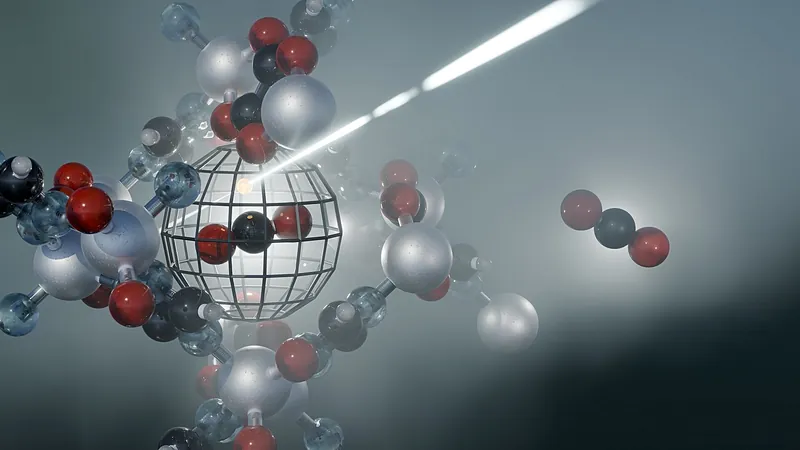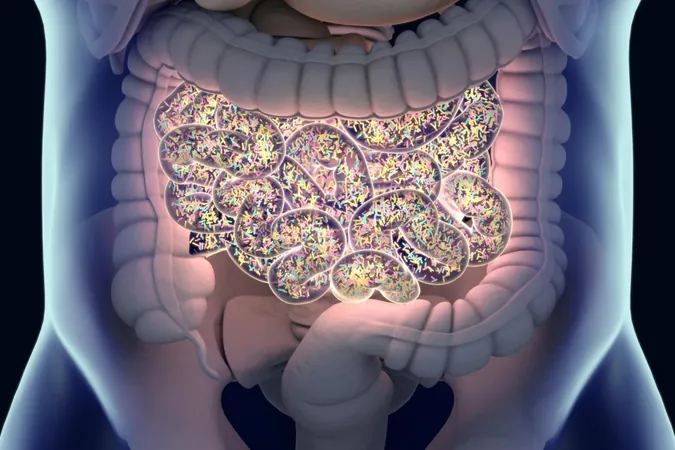
Revolutionizing Carbon Capture: How CALF-20 Locks CO₂ Safely Away
2025-05-13
Author: Benjamin
As industries worldwide scramble for groundbreaking solutions to combat climate change, a team of scientists has zeroed in on a remarkable material that's set to transform carbon capture: CALF-20. This innovative zinc-based metal-organic framework promises to not only trap carbon dioxide (CO₂) efficiently but also allow it to be stored securely—regardless of challenging environmental conditions.
Unveiling the Secrets of CALF-20
A cutting-edge study conducted by experts from Helmholtz-Zentrum Dresden-Rossendorf, Dresden University of Technology, and Maria Curie-Skłodowska University has shed light on how CALF-20 excels at capturing CO₂ while deftly sidestepping the typical interference from water—a notorious hindrance in carbon capture technologies.
Published in the journal Small, the research delves into the physics behind gas adsorption, highlighting CALF-20's superior performance in humid environments compared to traditional adsorbents like activated carbons and zeolites, which often falter in such conditions.
Why CALF-20 is a Game Changer
CALF-20's standout features include its impressive CO₂ uptake, low energy requirements for regeneration, and remarkable ability to selectively prefer CO₂ over water vapor in moderately humid conditions. This means it not only minimizes energy consumption but also captures CO₂ more effectively than many other materials in similar studies.
Made up of metal-oxygen clusters linked by organic pillars, this highly porous framework boasts a 3D structure akin to a sponge, creating numerous cavities that facilitate CO₂ capture.
Innovative Techniques Reveal Intriguing Insights
In their exploration of CALF-20, researchers utilized an array of advanced techniques including positron annihilation lifetime spectroscopy (PALS) and in situ powder X-ray diffraction (PXRD). Dr. Ahmed Attallah emphasized that these methods allowed for real-time visualization of CO₂ interactions with the material's internal structure under varying temperatures and humidity levels.
The results unveiled that CO₂ initially clusters in the center of CALF-20's nanopores before spreading to the walls, a process that corresponds with increased pressure—an indication of the material's remarkable adaptability.
Navigating Humidity Challenges with Ease
Humidity often disrupts many carbon capture systems, as water competes for adsorption sites. However, CALF-20 proved resilient. With strategic experimentation, researchers discovered that this material maintained strong CO₂ adsorption performance in the presence of moisture.
At lower humidity, water remains isolated, allowing CO₂ to find ample space for adsorption. As humidity rises, while water forms a network that threatens efficiency, CALF-20 continues to provide significant CO₂ capacity.
A Bright Future for Carbon Capture
With CALF-20 already scaled up to multi-kilogram production, its potential for real-world applications is enormous. This breakthrough not only opens doors for optimizing future metal-organic frameworks but also significantly contributes to carbon capture and storage efforts.
Researchers are gearing up for subsequent studies to enhance long-term stability and process integration, aiming to bring CALF-20 closer to practical implementation in industry-wide CO₂ mitigation strategies. This isn't just a win for science; it's a critical step toward a greener, more sustainable future.









 Brasil (PT)
Brasil (PT)
 Canada (EN)
Canada (EN)
 Chile (ES)
Chile (ES)
 Česko (CS)
Česko (CS)
 대한민국 (KO)
대한민국 (KO)
 España (ES)
España (ES)
 France (FR)
France (FR)
 Hong Kong (EN)
Hong Kong (EN)
 Italia (IT)
Italia (IT)
 日本 (JA)
日本 (JA)
 Magyarország (HU)
Magyarország (HU)
 Norge (NO)
Norge (NO)
 Polska (PL)
Polska (PL)
 Schweiz (DE)
Schweiz (DE)
 Singapore (EN)
Singapore (EN)
 Sverige (SV)
Sverige (SV)
 Suomi (FI)
Suomi (FI)
 Türkiye (TR)
Türkiye (TR)
 الإمارات العربية المتحدة (AR)
الإمارات العربية المتحدة (AR)